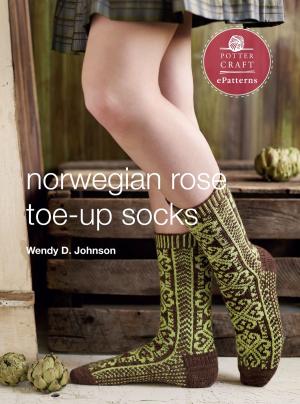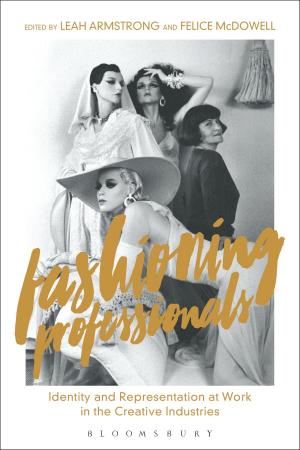Widows Unveiled
Fashionable Mourning in Late Victorian New York
Nonfiction, Art & Architecture, General Art, Fashion| Author: | Rebecca McNamara | ISBN: | 9781942303091 |
| Publisher: | Distributed Art Publishers | Publication: | November 8, 2016 |
| Imprint: | DesignFile | Language: | English |
| Author: | Rebecca McNamara |
| ISBN: | 9781942303091 |
| Publisher: | Distributed Art Publishers |
| Publication: | November 8, 2016 |
| Imprint: | DesignFile |
| Language: | English |
Somber black crepe gowns, long black veils, a strand of Whitby jet beads or a bracelet braided from a loved one’s hair, black-edged handkerchiefs-these were just some of the trappings of late nineteenth- and early twentieth-century mourning. Middle- and upper-class Americans of this era were expected to follow strict etiquette guidelines in all aspects of their lives, including-perhaps especially-following a loved one’s death. Sustained by advice writers, newspapers, and the retail and manufacturing industries, mourning culture was prevalent in daily urban life. Prescriptive guidelines were most extreme for the widow, who was expected to mourn her lost husband for at least two years, including one in seclusion from society. Filled with nuanced requirements for how to live and what belongings to live with, these customs would have been difficult, if not impossible, for most women to follow-especially those suddenly impoverished by their widowhood. Widows Unveiled illuminates American mourning practices between the Civil War and World War I through an investigation of the textual, material, and visual culture of New York widowhood.
Illustrated with images of period costumes, jewelry, accessories, drawings, and photographs, Widows Unveiled analyzes mourning etiquette and its accouterments, interprets the abundant negative stereotypes of widows in visual culture, and explains the slow, uneven demise of mourning practices in the twentieth century. Author Rebecca McNamara demonstrates that material mourning was far more complex and confusing than is generally acknowledged and that its purpose went beyond superficial consumption: indeed, the black-crepe-enrobed and -veiled woman, as she navigated a society critical of and even hostile to widows, was both demonstrating an ideal feminine role-loyal, doting wife-and signifying a continued independent presence in polite society.
Illustrated with images of period costumes, jewelry, accessories, drawings, and photographs, Widows Unveiled analyzes mourning etiquette and its accouterments, interprets the abundant negative stereotypes of widows in visual culture, and explains the slow, uneven demise of mourning practices in the twentieth century. Author Rebecca McNamara demonstrates that material mourning was far more complex and confusing than is generally acknowledged and that its purpose went beyond superficial consumption: indeed, the black-crepe-enrobed and -veiled woman, as she navigated a society critical of and even hostile to widows, was both demonstrating an ideal feminine role-loyal, doting wife-and signifying a continued independent presence in polite society.
Somber black crepe gowns, long black veils, a strand of Whitby jet beads or a bracelet braided from a loved one’s hair, black-edged handkerchiefs-these were just some of the trappings of late nineteenth- and early twentieth-century mourning. Middle- and upper-class Americans of this era were expected to follow strict etiquette guidelines in all aspects of their lives, including-perhaps especially-following a loved one’s death. Sustained by advice writers, newspapers, and the retail and manufacturing industries, mourning culture was prevalent in daily urban life. Prescriptive guidelines were most extreme for the widow, who was expected to mourn her lost husband for at least two years, including one in seclusion from society. Filled with nuanced requirements for how to live and what belongings to live with, these customs would have been difficult, if not impossible, for most women to follow-especially those suddenly impoverished by their widowhood. Widows Unveiled illuminates American mourning practices between the Civil War and World War I through an investigation of the textual, material, and visual culture of New York widowhood.
Illustrated with images of period costumes, jewelry, accessories, drawings, and photographs, Widows Unveiled analyzes mourning etiquette and its accouterments, interprets the abundant negative stereotypes of widows in visual culture, and explains the slow, uneven demise of mourning practices in the twentieth century. Author Rebecca McNamara demonstrates that material mourning was far more complex and confusing than is generally acknowledged and that its purpose went beyond superficial consumption: indeed, the black-crepe-enrobed and -veiled woman, as she navigated a society critical of and even hostile to widows, was both demonstrating an ideal feminine role-loyal, doting wife-and signifying a continued independent presence in polite society.
Illustrated with images of period costumes, jewelry, accessories, drawings, and photographs, Widows Unveiled analyzes mourning etiquette and its accouterments, interprets the abundant negative stereotypes of widows in visual culture, and explains the slow, uneven demise of mourning practices in the twentieth century. Author Rebecca McNamara demonstrates that material mourning was far more complex and confusing than is generally acknowledged and that its purpose went beyond superficial consumption: indeed, the black-crepe-enrobed and -veiled woman, as she navigated a society critical of and even hostile to widows, was both demonstrating an ideal feminine role-loyal, doting wife-and signifying a continued independent presence in polite society.















